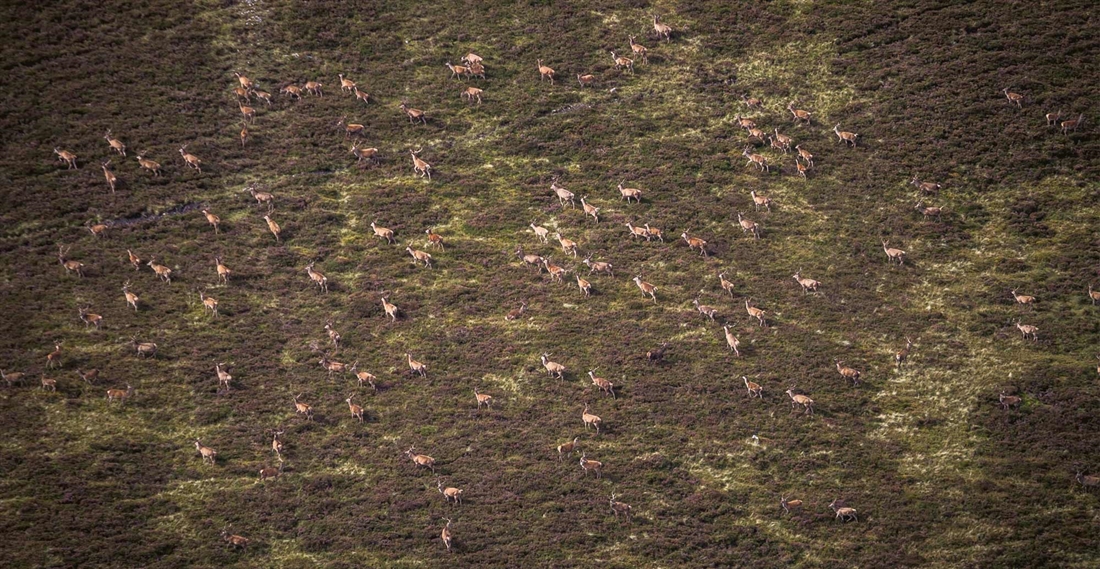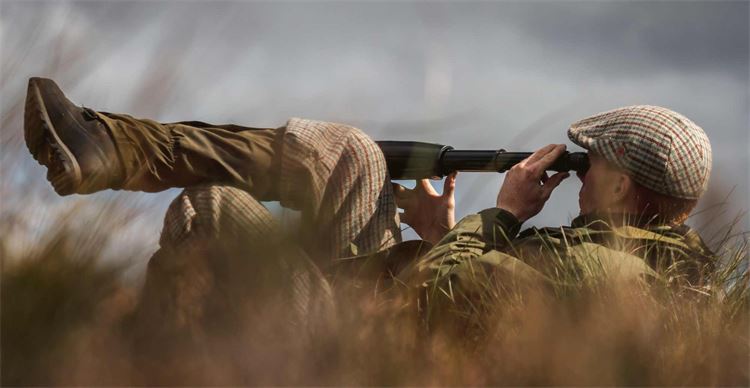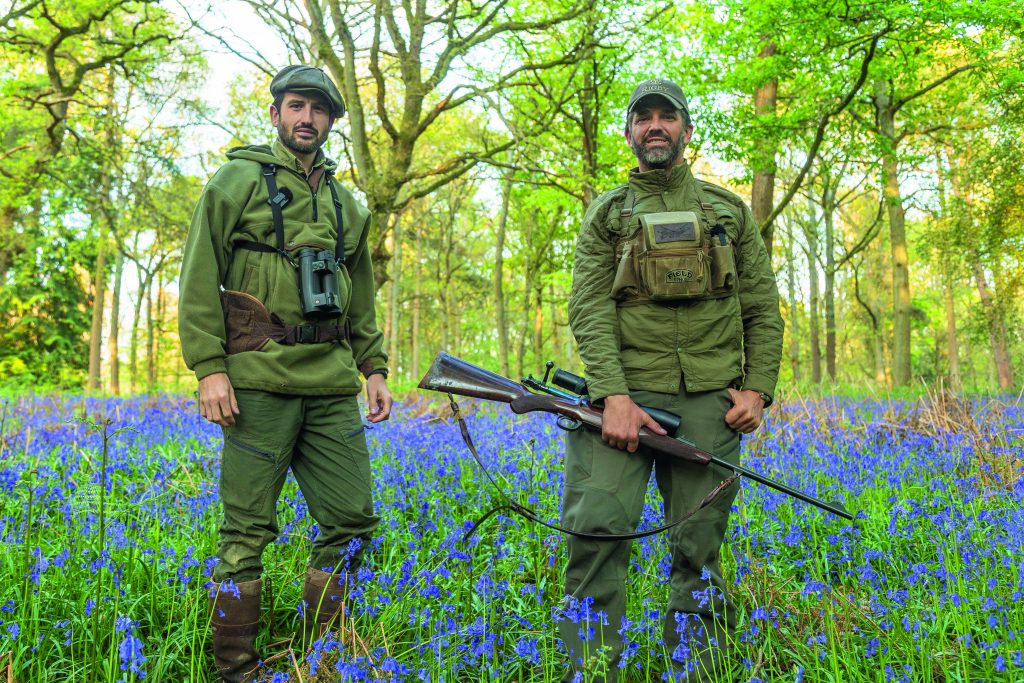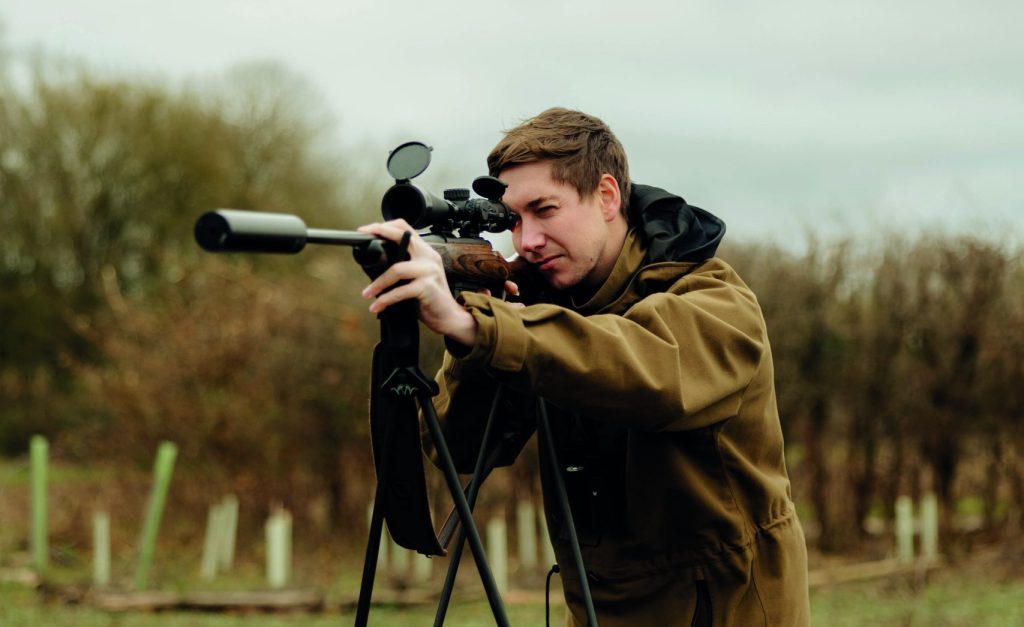A legacy that stands firm
The essence of country sports lies in overcoming the challenges encountered in the field while adhering to a centuries-old code. Great British stalking is a classic exemplar.

Britain is a Mecca for country pursuits: the sporting world pours in from Europe, the Middle East, USA, and, more recently, from China, paying vast sums of money to hunt the abundant game of the splendid British countryside. Like Pilgrims, visiting sportsmen leave flushed with reverence and respect for a centuries-old tradition, and many have visions of recreating it in their own countries.
All around the world, British culture influences hunting methods, equipment, fashion, and code of good practice. As far afield as New Zealand, driven pheasant shoots have been developed, some even insisting tweed breeks be worn. The Spey rod has had worldwide conquest – very few steelhead are caught on a single-handed rod these days. An old Rigby – a British rifle whose history dates back nearly three centuries – is a typical sight on the shoulders of veteran professional hunters in Africa. English shotguns are commonplace on wild partridge shoots in Spain, and the iconic Hardy rods and reels are frequently employed on Norwegian, Russian and Icelandic salmon rivers. The prestige of our gunmaking heritage sells some of the most expensive clothes in the world.
Alongside our elegant style and our quality craftsmanship, Britain leads the way internationally with respect to principles, codes of conduct and the ethics of country sports. This is perhaps a risky admission in this era of political correctness, which insists we feel guilty about the military conquests and colonialism of previous centuries. However, while we may regret the methods used by our forebears to bring a quarter of the world under their control, the impact and influence our illustrious ancestors had across the globe is immense. Traditions of the British have been adopted far and wide and that legacy stands firm today, even though the tide of our imperial dominance has receded. One such legacy is our sporting culture.
What we British gave to the world in hunting and shooting was a tradition of respect for the quarry; central to our hunting code is minimising the suffering of animals: British hunters seek to kill cleanly, painlessly and with compassion. British hunters, shooters and fishers have high standards concerning environmental and population sustainability, never taking more than necessary. Our tradition has always been about immersion into nature – challenging oneself in the natural environment and acquiring intimate knowledge of the creature being hunted and the habitat in which it lives. With a few exceptions, like the egotistical Lord Ripon, it has never been about competing with other people at the expense of animals, and hunting, shooting and fishing has always entailed respect for the environment. British country folk have a long history of devoting themselves to the land, predating the smug, quinoa-eating ‘environmentalists’ with their imagined connection to a countryside with which they have no true intimacy. Enormous effort is committed by British sportspeople in managing sustainability and maintaining an environment in which wildlife can thrive.
There is a spectrum of authenticity in hunting, with a backcountry pack-hunt where it is all up to you on one end, and, on the other, where a dazed animal is released from captivity into a small paddock and shot by paid-up hunter-tourists. The second is not hunting. Although it preserves animals, it cheapens our sport and erodes the defences we have against those who don’t approve of our way of life even when it is ethical. Thankfully this is not common practice in Britain, where the hunting culture is highly evolved and rooted in a rich tradition of respect for and appreciation of nature, and for the nobility of the hunt.
We Brits do not lay claim to being the only culture with a deep fondness and respect for wildlife; we admire, for example, the hunting tradition in Germany, where a driven big-game shoot ends with a profoundly moving ceremony: at the end of the day the animals are laid out, a sprig of pine in each mouth, and horns play a different tune for each animal – the wild boar, the deer and the fox – while the Guns stand silently, hats doffed.
Where our sporting cultures diverge is that we consider it sacrilegious to shoot birds on the ground and animals on the run, even on driven shoots. Growing up with this creed, it took me some getting used to shooting at running big game elsewhere in the world. In my early years on driven wild boar shoots in wider Europe, I struggled to override my heritage to never shoot an animal that was not standing completely still. Almost 20 years later I am better-practiced at shooting animals on the run, but it still makes me a little anxious.
Recently I had the good fortune to be one of a small team involved in a driven big game shoot in Africa. It was a necessary cull of springbok, wildebeest and some other antelope species. While I was careful to shoot within my capabilities – i.e. not taking super-long shots at running animals – I got into a merry rhythm of bowling over the magnificent game of all denominations pouring past me. But never in a million years would I shoot a red stag on the hoof in Scotland, unless it was already wounded.
I love hunting abroad. Taking on exotic creatures in strange, faraway places, and conquering unfamiliar terrain is hugely thrilling. I bear witness to, and practice the hunt according to the local culture, often far removed from our own. However, for me, nothing beats stalking in the UK. Britain is second to none in accessibility, choice and variation of game. All of our gamebirds are special in their own way; there is a great selection of ‘vermin’, and our six species of deer each have their own particular magic.
In truth I’ve never seen a Chinese water deer in real life, let alone stalked one, but I am very familiar with the others. I have a particular fondness for roe deer, not least because they taste sublime – along with grouse it occupies most of my freezer space. At the moment – because I’ve eaten all the rest – it is mainly bags of slow-cooked neck meat ragu which I could happily eat every day, ladled over fresh pasta or gnocchi.
Stalking roe can be a challenge, and my success rate is far from 100 per cent because of its wariness and tendency to melt into dense cover. Last summer a doe and her two fawns took up residence just across the small burn outside my bedroom window in Scotland, and it has been a source of great pleasure to watch them live out their normally invisible private lives during the following months: the roe deer is a charming and elegant creature. It is also multidimensional: calling in a roebuck, you see the other side to their character; all caution lost in the need to procreate. Few things are as exciting as having a wild animal seek you out, especially one usually so elusive.
The roe deer is exciting, however, for me the red stag reigns supreme in the panoply of British big game. It is virtually impossible to write about the emotions invoked by he or his realm without using superlatives. Hundreds of whisky bottles, thousands of chocolate boxes and a million words written about the Highlands have made it a tawdry cliche. As I try, and fail, I’m reminded of what Hemingway says in Death in the Afternoon about the limits of language, that beyond a certain point a description of an activity fails for those who haven’t experienced it. This is true of being in the Highlands stalking a red deer. To understand, you have to do it.
I acknowledge that the average Scottish stalker doesn’t make it easy to participate. Many newcomers have felt detached from the stalk and got little from it. For them I’m sorry that it is difficult to find a way in quickly. But for those for whom stalking is an annual experience, the relationship with the land, the animals and the people of the Highlands is truly joyous. And paradoxically the fact that the people, like the land – and indeed the whole experience – are hard, makes it so much better because it is unaffected and authentic.
My best stalks are always the worst. One of the highlights of my year is stalking at my friend Robin’s place in Sutherland during the rut. The weather is always gritty. We walk for several hours each day in the driving rain, crawl and slither through bogs for the last half a mile, feeling more like eels than humans, to get within 200 yards of our quarry. Cold, wet and hungry, my dog shivering so much it seems he’ll disintegrate.
Getting back to the lodge after sunset, caked in mud, followed by the euphoria of sliding into a hot bath – a key component of stalking and shooting in Britain, yet oddly the one element which doesn’t seem to have caught on elsewhere – too exhausted to think about anything except reflection of the day…
… Re-living the pursuit, from the moment I first saw a small harem of watchful hinds through my binoculars as I sat hunched in a peat hag. Often the same scenario: Watching the females staring at a hillside where suddenly appears a stag. Feeling again, as I wallow in the steaming water, the lurch in my chest on seeing the blur of black and brown peel away from the herd, their hitherto unseen champion, charging the interloper. The clash of antlers carried away in the wind. The challenger beaten, slopes away…
… We go in the other direction, it would do no good to the population to take out either of these two heroes. More walking, more sitting, glassing. Despite the gallon of pine essence in the bath water, I recall that whiff of rutting stag: I relive the moment of smelling my quarry before I see him, and then the endless slithering. Goosebumps surface as I remember the biting cold, trousers soaked through, hands numb in saturated gloves. The lean, tweed-covered buttocks of Alastair the stalker just ahead of me obscuring my vision. Then, finally, lifting our heads millimetre by millimetre above a sodden tussock, and realising I’m close enough to take a shot, suddenly the cold is forgotten, rifle slides forward, shoulder and cheek presses hard against the stock and there he is in the scope. I close my eyes in sheer contentment as my bones begin to thaw.
The essence of country sports lies in overcoming the challenges encountered in the field while adhering to a centuries-old code. I am proud that so many of us hold the British sporting tradition in high esteem. Our native species – woodcock, hare, grayling, pigeon, fox to name a few – are icons of our sacrosanct wild places. They are Britain, they are a part of us. Hearing a red stag or a fallow buck roar across a foggy autumn glen or ancient woodland stirs our souls, as it did the souls of our ancestors. Our hunting traditions, like our splendid creatures and our glorious land, have stood the test of time, such that one exists as part of the other.
Our landscape represents the intersection between human and wildlife, as it did for previous generations. Our tweed mills keep on turning; Rigby continues to make excellent rifles and the House of Hardy is still creating beautiful rods and reels. But best of all, our Great British values live on.
Related Articles
Get the latest news delivered direct to your door
Subscribe to Fieldsports Journal
Elevate your experience in the field with a subscription to Fieldsports Journal, the premium publication for passionate country sports enthusiasts. This bi-monthly journal delivers unparalleled coverage of game shooting, fishing and big game across the UK and beyond.
Each issue offers a stunning collection of in-depth features, expert opinions and world-class photography, all presented in a timeless yet contemporary design.
Save 10% on shop price when you subscribe, with a choice of packages that work for you. Choose from Print & Digital or Digital only with each journal delivered directly to your door or via the app every other month, plus access to past issues with the digital back issue library.








